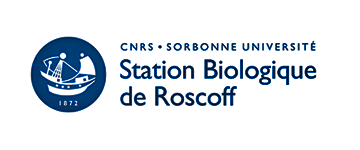Scientific, technic and economical outcomes.
Understanding the effects of Fe limitation on marine phytoplankton at all scales of organization from the gene to the global ocean is a very hot topic in marine microbial ecology, since this phenomenon concerns huge oceanic areas currently expanding in response to global change, with probable consequences on the ocean ability to sequester CO2 via the biological carbon pump. In this context, there is a clear need for studies concerning the capacity of marine phytoplankton to cope with these ongoing changes and how they will affect the functioning of marine ecosystems at the global scale.
Due to their ubiquity, their large abundance and the availability of many reference genomes, allowing to functionally assign meta-omic reads at high taxonomical resolution, the picocyanobacteria Prochlorococcus and Synechococcus are among the few microorganisms for which it is possible to differentiate acclimative (i.e. physiological) and adaptive (i.e. evolutionary) responses directly in the field. Furthermore, cultured isolates are available from almost all clades and oceanic regions, including Synechococcus strains representative from each of the three distinct genotypes (CRD1A-C) that we recently identified in low-Fe regions. This unique combination of assets makes picocyanobacteria, and more particularly Synechococcus, the most relevant models for the cross-scale systems biology approach that we will deploy within CINNAMON. This approach should allow us to i) decipher the molecular processes involved in the adaptation/acclimation of these microorganisms to Fe-poor niches, ii) assess the consequences of ecotypic diversification on their community composition and dynamics at short time scale and iii) predict the long-term behavior of natural communities of these micro-organisms, and of phytoplankton at large, in the context of global change.
Results from CINNAMON will be of high interest not only to microbiologists, plant physiologists and oceanographers but also to biochemists, since our approach should reveal novel genes involved in the adaptation to chronically low-Fe areas (e.g., specific iron uptake systems) that will be functionally characterized by gene inactivation and mutant analyses. In addition to their ecological importance, marine picocyanobacteria are also of evolutionary interest because they are direct descendants of the earliest oxygenic phototrophs, which evolved ∼3 billion years ago when Fe was present as soluble Fe(II) at orders of magnitude higher concentrations than in the modern ocean. The CINNAMON project should thus allow us to check the evolutionary(1) scenario that earlier cyanobacteria possessed a high cellular growth requirement for Fe than more recently evolved eukaryotic algae and better understand the niche-driven evolution of Fe metabolism.
Understanding the impact of Fe limitation also clearly answers a societal claim, since decision-makers are fully aware of the necessity to preserve marine areas and in need for efficient tools of ocean management. Two outcomes from CINNAMON could be useful in this context. First, given the difficulty to assess Fe limitation by chemical approaches, Synechococcus CRD1 ecotypes could constitute good biomarkers for monitoring the expansion of Fe-depleted oceanic regions in the context of global change or the effect of artificial Fe inputs on phytoplanktonic communities, since the occurrence of CRD1 populations is directly correlated to Fe availability. Secondly, CINNAMON will allow us to identify new functional markers that could be used to follow the physiological status of cyanobacterial communities with respect to environmental conditions, e.g. in long-term ocean monitoring programs. More generally, CINNAMON should give us a better appraisal of the ecosystemic services offered by marine picocyanobacteria. A final goal of CINNAMON will be to raise awareness among general public about the effects of global change on marine ecosystems by developing specific communication tools.
[1]Thus, cyanobacteria have been proposed to possess a much higher cellular growth requirement for Fe than more recently evolved eukaryotic algae, as a vestige of the high availability of Fe in the ancient ocean. In the context of CINNAMON, the comparison of strains genomes and populations metagenomes originating from environments with widely different Fe availability should allow us to check this evolutionary scenario and better understand the niche-driven evolution of Fe metabolism.








